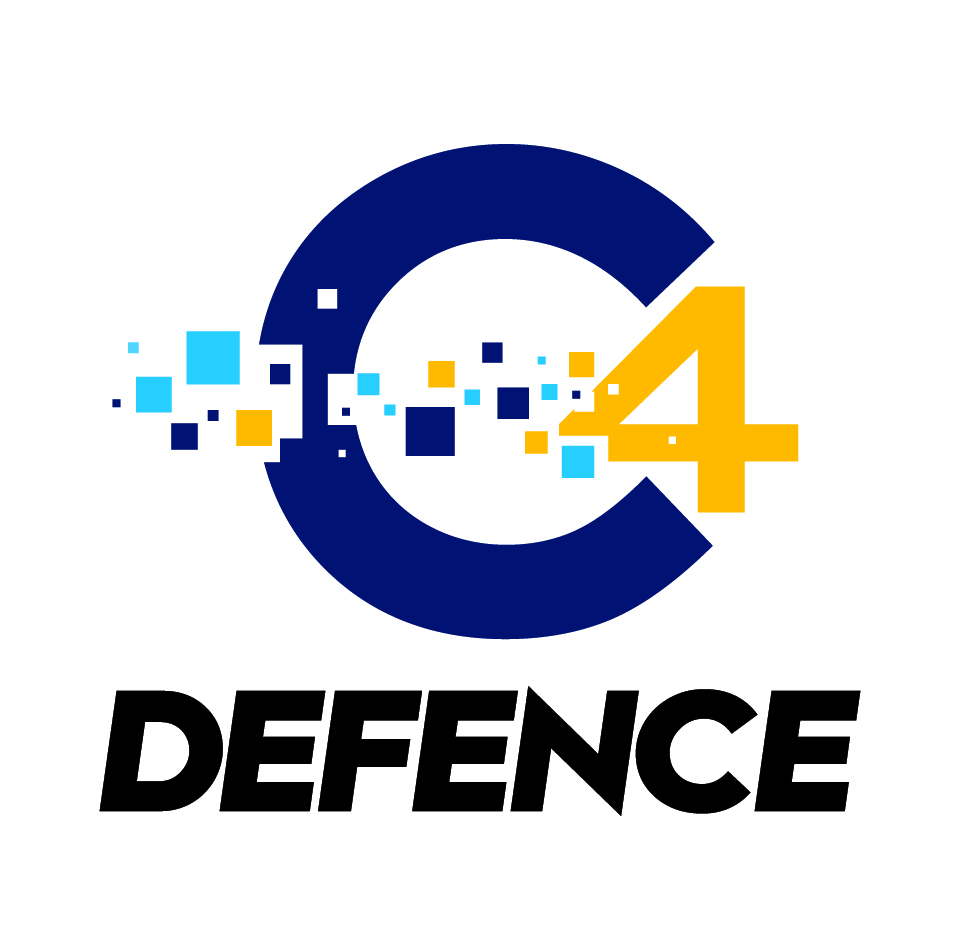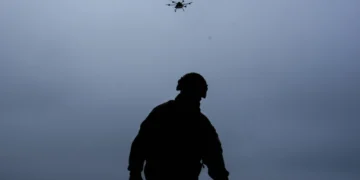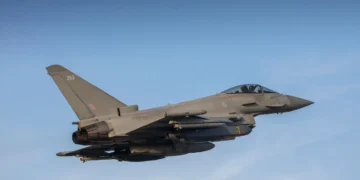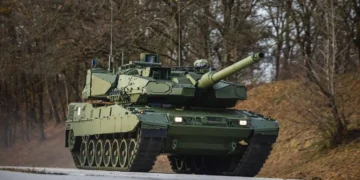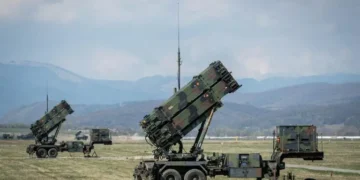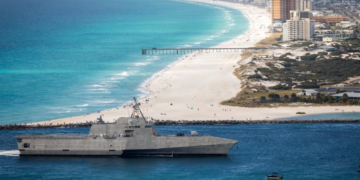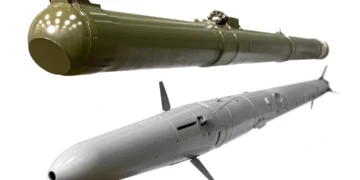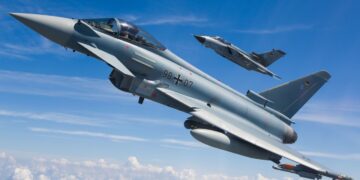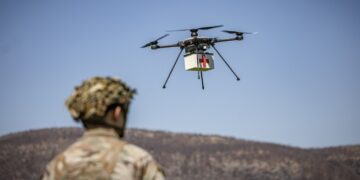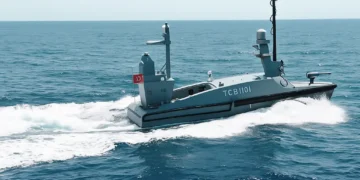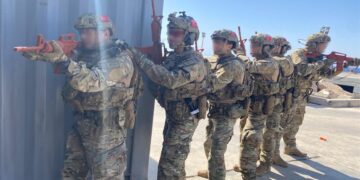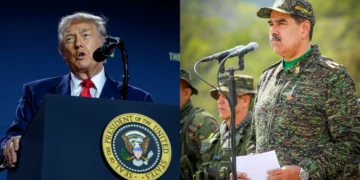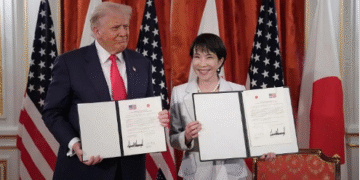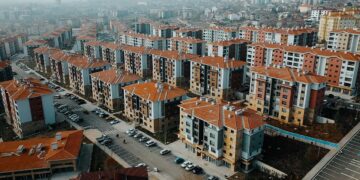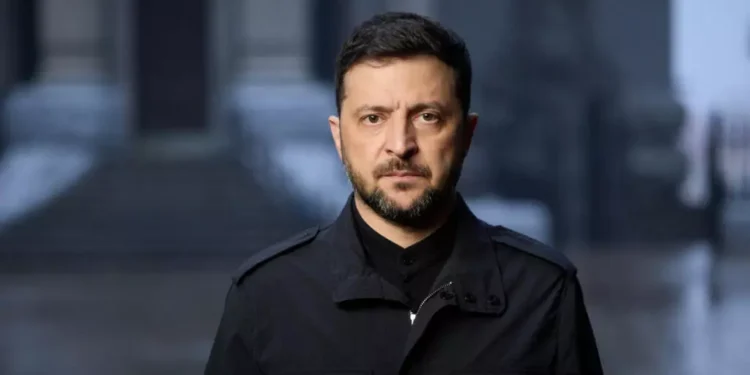“Ukraine needs peace, and Ukraine will do everything so that no one in the world can say we have disrupted diplomacy.[1]Our people truly want this war to end. Of course, we are strong, but even the strongest metal can break. [2]Do not forget this. Ukraine may now be facing a very difficult choice: either lose its honor or risk losing a key partner.”[3]
Ukrainian President Volodymyr Zelensky [4]
Negotiations are ongoing regarding the peace plan proposed by U.S. President Donald Trump to end the war in Ukraine. [5] Trump’s 28-point plan pressures Kyiv to cede territory, limit its military power, and pledge not to join NATO in exchange for ending the war—concessions long demanded by the Kremlin. The plan, which foresees significant concessions from Kyiv, has been met with backlash in Ukraine. Some experts claim that Trump’s proposal favors Moscow and would encourage Russian President Vladimir Putin to attack NATO. [6]
The United States has revealed all 28 points of the proposal to Ukrainian President Zelensky.[7] For a lasting solution to Russia’s war against Ukraine, a ceasefire along mutually agreed borders, security guarantees for Ukraine, and continued recognition of Ukrainian sovereignty—even if Russia continues occupying some Ukrainian lands indefinitely—are required. Although these principles appear in distorted or contradictory forms within the U.S. draft, diplomats stress that the wording can be negotiated.
The draft plan supported by President Trump requires Ukraine to hand Crimea and the Donbas region to Russia and to permanently abandon NATO ambitions in exchange for U.S. security guarantees. [8] In return, Russia would formally pledge not to invade Ukraine or the rest of Europe again, while maintaining parts of eastern Ukraine and reintegrating into the global economy. Following sudden comments from Trump administration officials offering unilateral concessions to Moscow and criticizing Ukraine, American support for Kyiv has recently come into question. [9]
Zelensky has stated that Ukraine will not betray its national interests in the U.S.-led peace process. [10]Ukraine has not rejected the plan outright but insists on sovereignty over its occupied territories and refuses to recognize Russia’s claims. Russia may also demand revisions to the plan involving limits on Ukraine’s military size. As currently written, the proposal would require Ukraine to give up more than 20% of its territory, accept restrictions on its armed forces, and constitutionally ban NATO membership.[11]
Indeed, Ukraine’s Deputy Permanent Representative to the United Nations stressed that Kyiv would not cross any red lines regarding sovereignty or territory and approached the U.S. proposal cautiously: “Ukraine is ready to enter meaningful negotiations to end this war, but our red lines are clear and unshakeable. Ukrainian territory temporarily occupied by the Russian Federation will never be recognized—formally or otherwise. Our land is not for sale.” [12]
In this context, the following key questions are expected to shape public debate in Europe and worldwide:
• To what extent can U.S. President Trump’s pressure result in an honorable and legally acceptable peace agreement under international law?
• Can trust between Russia, Europe, and NATO be restored?
• After the Soviet collapse, will G7 member Moscow prefer normalizing with the West in 2026 over its partnership with China?
• Will Putin adjust his strategic plans through a Ukraine peace agreement?
• Can peace in Ukraine be permanent? Or, as with the 1919 Versailles and 1939 Berlin Agreements, could it become a waiting room for another war?
• After elections, will the new Kyiv administration in Spring 2025 accelerate Western fighter jet, UAV, and missile production to avoid battlefield losses to Moscow?
• For Türkiye, will the most important outcome be the reopening of the Turkish Straits to international maritime traffic under the 1936 Montreux Convention, restoring navigation security through maritime law and IMO rules?
• Ultimately, will Istanbul host the historic summit for a ceasefire agreement?
The Long Road to Peace After the 1986 Reykjavík and 2025 Alaska Summits
The Reykjavik Summit held on 11–12 October 1986 between Ronald Reagan and Mikhail Gorbachev went down in history as an almost successful attempt by the leaders of the nuclear powers to reach an agreement on the complete elimination of nuclear weapons. The Reykjavik Summit, which paved the way for the end of the Cold War, resulted in the redrawing of Europe’s security architecture, the dissolution of the USSR and the Warsaw Pact, and the expansion of NATO and the EU.
However, forty years later, the United States has returned to the European table with a different mediating role in order to end the Ukraine War. Donald Trump is eager to win the Nobel Peace Prize, but if the new 28-point plan he has prepared to end Russia’s invasion of Ukraine is accepted, the committee will have to reconsider the matter. [13] As is well known, when Ukraine gained independence from the Soviet Union in 1991, it possessed the world’s third-largest nuclear arsenal, consisting of an estimated 1,900 strategic warheads, 176 intercontinental ballistic missiles (ICBMs), and 44 strategic bombers. By 1996, Ukraine had returned all its nuclear warheads to Russia in exchange for economic aid and security assurances, and in December 1994, Ukraine became a non-nuclear-weapon state party to the 1968 Treaty on the Non-Proliferation of Nuclear Weapons (NPT). Ukraine signed the Lisbon Protocol on 23 May 1992. [14]The protocol aimed to return nuclear weapons located in Belarus, Kazakhstan, and Ukraine to Russia.
To solidify security commitments to Ukraine, the United States, Russia, and the United Kingdom signed the Budapest Memorandum on Security Assurances on 5 December 1994. The memorandum, a political agreement in line with the principles of the Helsinki Accords, contained security guarantees against threats or use of force against Ukraine’s territory or political independence. The countries pledged to respect Ukraine’s sovereignty and existing borders. Parallel memoranda were signed for Belarus and Kazakhstan as well. In return, Ukraine formally acceded to the NPT as a non-nuclear-weapon state on 5 December 1994. This step fulfilled the final condition for the ratification of START, and on the same day, the five parties to START exchanged instruments of ratification, bringing the treaty into force.
At a meeting of Russia’s Security Council, President Putin stated that Trump’s peace initiative had been discussed with U.S. officials prior to the 15 August summit in Alaska, and that at the summit Washington had asked Moscow to make concessions and “show flexibility.” [15]“The fundamental goal of the meeting in Alaska was to confirm that during the negotiations in Anchorage, despite some difficult issues, we agreed to these proposals and were ready to show the flexibility offered to us,” he said. He added that prior to the Alaska summit, Moscow had informed “all friends and partners in the Global South,” including China, India, North Korea, South Africa, Brazil, and CSTO members, and that all of them supported potential agreements. [16]
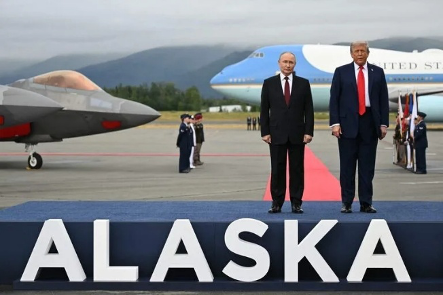
Ukraine will soon face a difficult decision as the Trump administration pressures Kyiv to adopt a 28-point peace plan that envisions major concessions to Russia. These concessions include relinquishing control over territories not currently occupied by Russian forces and abandoning certain weapons systems. The proposal also includes the withdrawal of some critical U.S. military assistance. Under the plan, Russia would gain effective control over the entirety of the eastern Donbas region—consisting of Donetsk and neighboring Luhansk—which is Ukraine’s industrial heartland. However, Ukraine still retains part of this region. Russian President Vladimir Putin has stated that the primary goal of the invasion was the capture of Donbas.
U.S. Special Envoy Steve Witkoff met with European leaders in Paris to discuss security guarantees for Ukraine, at a time when allies aim to provide long-term military support to the war-torn country and ensure continued American support even after the conflict ends. [17] The plan, supported by Steve Witkoff, Trump’s top Russia–Ukraine representative, contains 28 articles. [18] Trump is pressuring Ukrainian President Volodymyr Zelensky to accept the plan by Thanksgiving, warning that otherwise Kyiv risks losing U.S. support against Moscow’s invading forces. Europe has so far rejected the plan, and Zelensky again finds himself in a difficult position. French President Emmanuel Macron and UK Prime Minister Keir Starmer emphasized that any European “guarantee” force in Ukraine would require U.S. support. [19]
Donald Trump and Vladimir Putin have asserted that Zelensky must accept the peace plan by Thursday or face defeat. French Foreign Minister Jean-Noel Barrot stated: “Ukrainians want peace; a just peace that respects everyone’s sovereignty, a lasting peace that cannot be undermined by future attacks. But peace cannot be a surrender.” [20]
Ukrainian President Volodymyr Zelensky noted that they are working on the U.S. “peace plan” that could end the war, stating that his country would “never betray its national interests.” [21] Following his remarks, U.S. President Trump announced that Ukraine had until 27 November to accept the proposed plan to end the war. Meanwhile, Russian President Putin has given the plan the green light. Highlighting that the proposal consists of 28 articles, Zelensky remarked: “Ukraine may now face a very difficult choice—either losing its dignity or risking the loss of a key partner.” Zelensky added that the plan contains “heavy” terms for Ukraine: “Either 28 heavy points or an extremely harsh winter. Perhaps the harshest winter so far, and even more risks—living without freedom, dignity, and justice, and trusting someone who has attacked us twice before.”
Putin accused Ukraine of rejecting the plan and of being unrealistic, claiming that the plan “could form the basis for a final peace agreement.” [22]He described the plan as a “new version” and “modernized plan” of the one discussed with the United States prior to the August Alaska summit with President Donald Trump, and said that Moscow had received the plan. The Russian leader stated, “I believe this could form the basis of a final peace agreement.” Putin added, “Ukraine is against it. It seems that Ukraine and its European allies are still under the illusion of inflicting a strategic defeat on Russia on the battlefield.” [23]
Will Trump’s Plan End the War?

The plan envisions Ukraine giving territory to Russia; Kyiv has repeatedly rejected this, but it would also block the path to NATO membership. President Donald Trump’s plan to end the war in Ukraine includes the transfer of territory to Russia and limiting the size of Kyiv’s military. The draft includes confirmation of Ukraine’s sovereignty with U.S. security guarantees, restrictions on the Ukrainian armed forces, a constitutional commitment that Ukraine will not join NATO, reconstruction funds drawn from frozen Russian assets, a gradual easing of sanctions against Russia, and internationally monitored territorial arrangements. [24]
The 28-point plan states that Ukraine must transfer Crimea, as well as all of Luhansk and Donetsk, to Russia; however, Ukraine still controls one-third of Donetsk. Kherson and Zaporizhzhia would be frozen along current lines of contact. Part of the frozen Russian assets would be transferred to Ukraine’s reconstruction, sanctions on Russia would be lifted, and Moscow and Washington would reach a series of “long-term” economic agreements. [25]
The proposed 28-point plan is intended to be implemented as follows:
Immediate ceasefire: If both sides accept the agreement, the plan will take effect immediately.
Ukraine will transfer territory: Ukraine will transfer some non-occupied territories to Russia. Russia will also retain large portions of Crimea, Donetsk, and Luhansk that it occupies, and these areas will be recognized by the U.S. as de facto Russian territory. The regions of Kherson and Zaporizhzhia will be frozen along existing front lines.
Ukraine will not be a NATO member: Kyiv will renounce in its constitution the aspiration to join NATO. However, the path to EU membership will remain open. Ukraine’s entry into NATO will be prohibited; it will be prevented from possessing long-range weapons, from hosting foreign troops, from allowing foreign diplomatic aircraft to land, and its army will be neutralized and reduced by more than half.
Military limit for Kyiv: The country’s armed forces will be limited to 600,000 personnel.
U.S. guarantee: If Russia invades Ukraine again, this will “trigger a determined and coordinated military intervention and the re-imposition of sanctions on Moscow.”
Elections in Ukraine: Elections will have to be held within 100 days. Ukraine had planned to hold presidential elections in 2024, but they were postponed due to the war.
Economic guarantees: The plan envisions a recovery program for Ukraine, whose economy has been damaged by years of war. About $100 billion from frozen Russian assets will be transferred to Ukraine, and Russia will begin negotiations for the lifting of the heavy sanctions imposed since the start of the invasion. [26] In return, Russia will pledge not to attack again and will be granted the right to reintegrate into the global economy. This will include case-by-case consideration of possible sanctions relief and an invitation to return to the G7. [27] Trump’s effort to end the war could create a rift between himself and European leaders, who are likely to oppose any agreement that could be seen as rewarding Russian President Vladimir Putin’s aggression — a rift that may encourage rather than deter Trump. [28]
Approaches of European Countries to the Plan

European and Ukrainian officials, however, have argued that this would mean a “surrender.” The reaction of Ukrainian civil society was overwhelmingly negative. Ukrainian public opinion rejected the plan in various ways on the grounds that it was unilateral and amounted to a complete capitulation by Ukraine. On the other hand, Ukrainian officials state that the plan reflects Russia’s maximalist demands and revives concessions that had previously been abandoned. Because of Ukraine’s energy situation, the negotiations are considered urgent. Ukrainian officials and members of parliament have described the proposal as unrealistic and dangerous, warning that it could harm civilians and embolden Russia.
Volodymyr Ariev, a member of parliament from the opposition European Solidarity Party, said that the leaked plan appeared to be a “plan of surrender and betrayal,” and that it was “completely detached from the interests of Ukraine and the EU.” [29]Ariev believes that if Zelensky accepts it, a segment of society would reject it, which could lead to internal conflict.
Western allies, including French President Emmanuel Macron, German Chancellor Friedrich Merz, and UK Prime Minister Keir Starmer, met with Zelensky as a show of solidarity. [30] Reiterating their support for Kyiv, the leaders stated that any agreement reached to end the conflict must be truly just and take Ukraine’s red lines into account. Contrary to Trump’s proposal, which envisages Ukraine abandoning several major cities, they emphasized that the current line of contact should serve as the “starting point” for territorial discussions. They also stressed that the text should take into consideration the long-term interests of Europe and Ukraine.
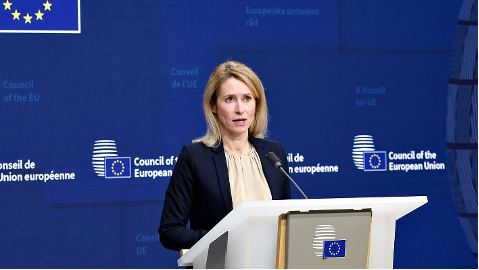
EU Foreign Policy Chief Kaja Kallas, speaking at the start of a meeting of the bloc’s foreign ministers in Brussels, stated, “For any plan to work, it needs the support of Ukrainians and Europeans.” [31] Kallas argued, “We all want this war to end, but how it ends matters. Russia has no legal right to extract any concessions from a country it has invaded,” adding, “This is a very dangerous moment for everyone.” [32]
The British prime minister called for a “just and lasting peace.” [33]“This is what the American president wants. It is what we all want, and that is why we must move from where we are toward this goal. But the principle that Ukraine must determine its own future under its own sovereignty is fundamental,” he said.[34] The UK’s former Defence Secretary Ben Wallace, in his statement, said, “Kyiv can manage without U.S. intelligence as well… The world has moved on, and the ability to collect intelligence from various data sources is now much more feasible.” [35]
U.S. Approach and Ceasefire Proposal
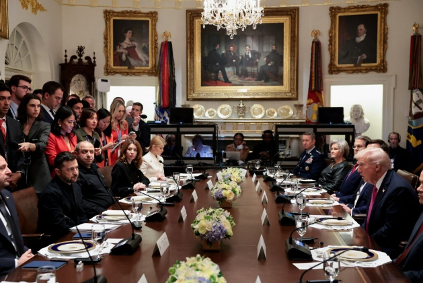
White House Deputy Chief of Staff Stephen Miller emphasized, regarding the proposal, that Trump “wants to reach an agreement in the Ukraine–Russia war, thereby ensuring peace in Europe and putting an end to the killing and slaughter of large numbers of innocent people.” [36]The spokesman also stated, “This plan was prepared to reflect the realities of the situation, in order to find the best win-win scenario in which both sides gain more than they have to give after years of a devastating war.” [37] Washington’s pressure on Ukraine has reached an unprecedented level since Trump temporarily suspended the sharing of weapons and intelligence with Kyiv in March. A delegation of senior U.S. military officials led by U.S. Army Commander Dan Driscoll met with Zelensky in Kyiv. Trump appointed Driscoll—Vance’s friend and former classmate—as his new “special envoy.” U.S. sources have stated that it is likely that the group of American generals will fly to Moscow to discuss the “peace plan” with the Kremlin. [38]
In a statement, the White House said that the plan supported by U.S. President Donald Trump to end Russia’s war in Ukraine is “good” for both sides, rejecting concerns that it reflects many of Moscow’s demands. U.S. Vice President JD Vance said that any plan to end Russia’s war in Ukraine must preserve Ukraine’s sovereignty and be acceptable to both countries; however, he added that believing Ukraine can win if the U.S. gives Kyiv more money or weapons and imposes more sanctions on Moscow is “a fantasy.” [39]
. Is the Plan Considered a Victory from Russia’s Perspective?
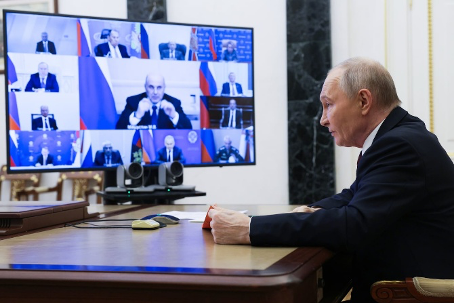
The Kremlin has repeatedly emphasized that it aims to achieve all of its war objectives through diplomatic or military means and has established informational conditions to justify renewed aggression against Ukraine at a later date. Russian officials have also set the informational groundwork to legitimize further aggression for Moscow’s occupation beyond the five regions it has illegally annexed in Ukraine.
This proposed plan would cater to Russian President Vladimir Putin’s theory of victory, which is based on the assumption that Russia’s military and economy can outlast Western support for Ukraine. It would reinforce the Kremlin’s belief that it can achieve its maximalist objectives in Ukraine and elsewhere with minimal international consequences. Therefore, it is highly likely that Russia would initiate a new offensive against Ukraine—at a time of its own choosing, along frontlines largely favorable to Russia, and with a bloodied yet rested and reconstituted army. [40]
Vladimir Putin stated that Ukraine would be acting unrealistically if it refused to accept the U.S. plan to end the war: “Ukraine is against this. It appears that Ukraine and its European allies are still delusional and dream of inflicting a strategic defeat on Russia on the battlefield.” The Russian President’s positive response reinforces the views of European and Ukrainian officials who interpret the deal as a form of “surrender.” Addressing Russia’s National Security Council, Putin described the 28-point plan as a “new version” and “modernized plan” of the proposal discussed with the United States ahead of the August Alaska summit with Donald Trump, adding that Moscow had received the plan. Putin stated that the plan “could form the basis of a final peace agreement.”
In this context, President Vladimir Putin said: “After the talks in Alaska, we saw a pause on the American side, and we understand that this is connected to Ukraine’s de facto rejection of the peace plan proposed by President Trump. I think that is precisely why a new version — essentially an updated plan consisting of 28 points — has emerged.” [41]
Russians have been forced to cope with years of isolation, repression, loss, and growing economic hardship. Inflation hovers at 10%, and Russians struggle to afford their basic needs (food, utilities, medicine, and gas). [42]The government’s budget is in equally poor shape: the deficit has already surpassed this year’s target, partly due to an approximately 30% annual drop in oil and gas revenues.[43]
For Russia, the plan envisions a gradual reintegration into the global economy (Article 13), with sanctions relief handled on a case-by-case basis. The United States would commit to a long-term economic cooperation agreement with Russia in sectors such as energy, natural resources, infrastructure, and the extraction of rare earth metals in the Arctic. As a major diplomatic gesture, Russia would be invited to rejoin the G8.
The use of frozen assets constitutes a significant transactional component (Article 14):
- USD 100 billion from frozen Russian assets would be directed to U.S.-led efforts for Ukraine’s reconstruction, with the U.S. receiving 50% of the profits.
- Europe would later be expected to contribute an additional USD 100 billion to the reconstruction fund.
- Remaining frozen European funds would be released, and the rest of the frozen Russian assets would be invested into a joint U.S.–Russia investment vehicle designed to strengthen ties and deter future conflicts.
The final articles address mechanisms for ending the conflict and implementing sanctions relief. The United States and Russia would agree to extend agreements on nuclear non-proliferation and control, including the START I Treaty (Article 17), and Ukraine would agree to remain a non-nuclear state (Article 18). Russia would formally codify a policy of non-aggression toward Europe and Ukraine (Article 16).
The Zaporizhzhia Nuclear Power Plant would be returned to operation under IAEA supervision, with electricity production split equally—50/50—between Russia and Ukraine (Article 19).
In social and cultural affairs (Article 20), both countries commit to educational programs that promote understanding and tolerance. Ukraine will adopt EU rules on religious tolerance and the protection of linguistic minorities, and both parties will eliminate discriminatory practices in media and education. Most importantly, all Nazi ideology and activities must be rejected and banned.
A humanitarian committee will be established to resolve outstanding issues, ensure the exchange of all remaining detainees and bodies on an “all-for-all” basis, secure the return of civilian detainees and hostages (including children), and implement a family reunification program (Article 24).
Russia also agrees not to obstruct Ukraine’s commercial use of the Dnipro River, and arrangements will be made for the free transport of grain through the Black Sea (Article 23).[44]
The plan calls for Russia’s gradual reintegration into the global economy, the phased lifting of sanctions, and the initiation of U.S.–Russia cooperation in energy, infrastructure, artificial intelligence, and rare earth element projects. Russia would eventually rejoin what is now the G7.
The Kremlin continues to use economic incentives and nuclear threats simultaneously to extract concessions from the United States for the normalization of U.S.–Russia relations; however, it offers no reciprocal concessions to end the war. [45]
The Current Situation on the Battlefield and the Offensives of the Russian Army
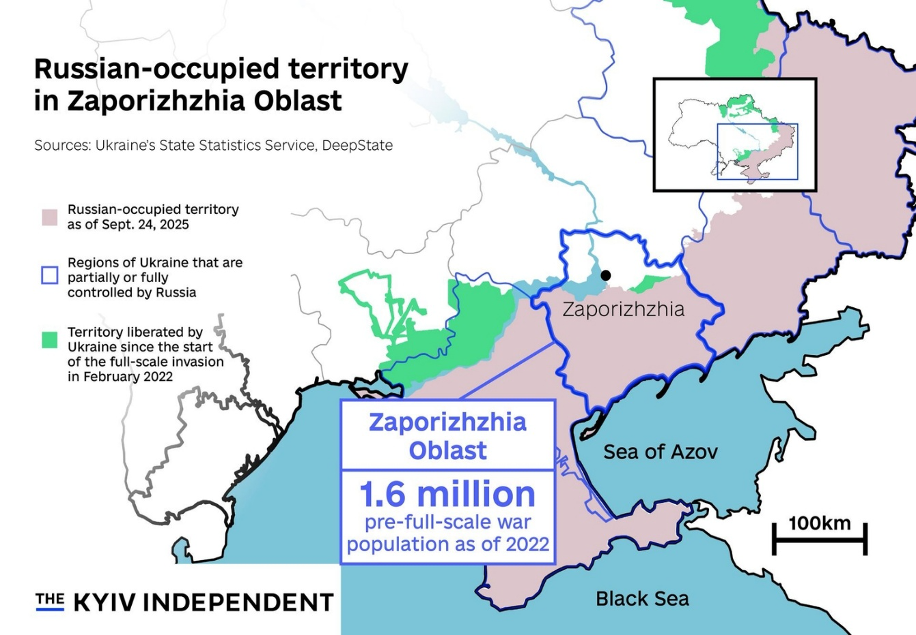
In 2025, the war in Ukraine was characterized by stagnation on the eastern fronts and by the concentration of technological impact, especially due to the intensive use of unmanned aerial vehicles, which led to a profound transformation in the nature of the conflict. Although Russia does not fully control all the territories it has annexed, it continues to maintain control over Donetsk, Luhansk, Zaporizhzhia, Kherson, and Crimea, while the main operations have been concentrated in Pokrovsk and Kostyantynivka, which have become operational centers of gravity.

Russia strengthened its numerical and technological superiority, adapting infiltration and attack tactics with small groups supported by unmanned aerial vehicles, achieving limited advances but facing high human losses and significant Ukrainian resistance. Ukraine, on the other hand, despite facing serious mobilization and attrition problems, managed to slow down the Russian offensive through intelligent urban defense, localized counterattacks, and increasingly effective selective drone strikes targeting Russian military and energy infrastructure. In a war where frontlines are often unclear, attack directions frequently uncertain, and much of the information about what is happening is often doubtful or highly complex, the strategic dynamics of the conflict are shaped by the attrition of combatants on the front lines, strikes on rear-area targets, and the industrialization of war production.
The Russian Army is likely in its best position in roughly a year. It is only weeks, or even days, away from capturing Pokrovsk, the key eastern military hub that has held great strategic importance since last summer and has been fiercely contested. [46] Its forces are positioned on the southern outskirts of the city, and if they capture it, they will encounter only a few major settlements remaining under Ukrainian control in the western areas before approaching the capital, Kyiv. This terrain is mostly flat and open—ideal for rapid advance. Moscow has also launched an offensive in the Zaporizhzhia region, using armored vehicles and dangerously approaching the city of Zaporizhzhia, seizing an open and flat area that will remain vulnerable during the winter months.
Russian Chief of the General Staff Gerasimov claimed that Russian forces have advanced along nearly all fronts of the battlefield. Gerasimov asserted that Russian forces had taken more than 80% of Vovchansk and over 75% of Pokrovsk. However, ISW observed evidence supporting the assessment that Russian forces had taken 34% of Vovchansk and 46% of Pokrovsk. When Lieutenant General Sergey Medvedev, commander of the Russian Southern Group of Forces, was appointed after serving as the group’s chief of staff, he claimed that Russian forces had taken control of eastern and southeastern Kostyantynivka and had begun clearing the central area. [47] But ISW observed evidence only of limited Russian infiltration attempts into southeastern Kostyantynivka. Medvedev stated that the Russian military command planned to capture most of Kostyantynivka by mid-December 2025. Putin said that setting exact dates was not important, but Medvedev’s statement was an attempt to demonstrate the Russian military command’s confidence in its ability to rapidly seize the southern end of Ukraine’s heavily fortified Fortress Belt. [48]
According to Black Bird Group, an open-source intelligence collective from Finland, Russian troops have captured more than 15 villages in southeastern Zaporizhzhia Oblast since September, appearing to intensify their assaults by exploiting weather conditions and Ukraine’s insufficient manpower. [49]
Can the Plan Bring a New Security Architecture to Europe?
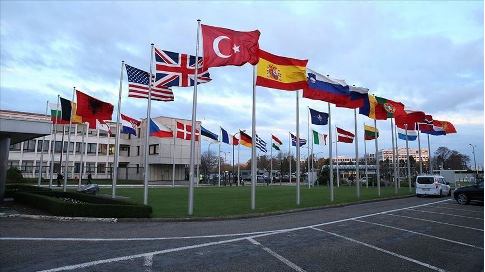
The plan states that Ukraine would receive “reliable security guarantees,” which is something that Central Europe has demanded in any agreement, and that a “decisive and coordinated military response” would be given in the event of another Russian invasion. However, according to some perspectives, while Donald Trump’s willingness to end the war is, in itself, a commendable objective, the U.S. president appears unaware of the very real concerns expressed by Ukrainians. This concern is that the “peace terms,” effectively dictated by Moscow, could leave Ukraine unable to defend itself adequately if President Putin returns to demand more.
Tim Ash from the Chatham House think tank in the UK stated, “Russia is getting everything it wants, while Ukraine is getting very little. If Zelensky accepts this, I expect major political, social, and economic instability in Ukraine.” [50]
The plan theoretically outlines a tight new security structure designed to protect Kyiv while meeting Moscow’s long-term demands. It explicitly states that Russia is not expected to invade neighboring countries and that NATO must commit to no further expansion (Articles 3 and 7). Ukraine should constitutionally ban NATO membership, and NATO should reciprocate by amending its charter to include a provision permanently preventing Ukraine’s future accession. Additionally, NATO will agree not to deploy troops in Ukraine (Article 8).
The size of the Ukrainian Armed Forces will be strictly limited to 600,000 personnel from the current 2.2 million (Article 6). To provide deterrence on the eastern flank of the Alliance, European combat aircraft will be deployed in Poland (Article 9). The U.S. will provide Ukraine with a definitive security guarantee (Article 10) and will receive corresponding assurances. If Russia invades Ukraine, all global sanctions will be reinstated, and all benefits of the agreement, including international recognition of new territorial arrangements, will be canceled.
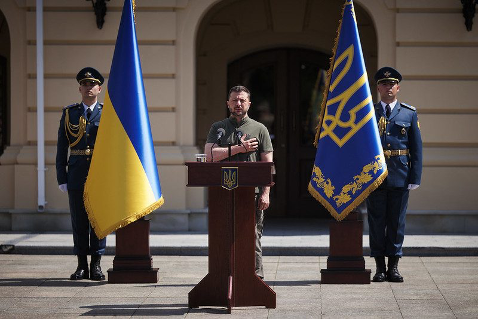
Before full implementation, a dialogue between Russia and NATO, mediated by the U.S., must resolve all security issues and create the conditions necessary to reduce tensions (Article 4), which will ensure that Ukraine receives reliable security guarantees (Article 5).
Economic Integration and Reconstruction: The proposal offers a significant financial incentive for Ukraine and a pathway for Russia to reintegrate into the global economy. Ukraine will immediately become eligible for EU membership and gain short-term preferential access to the European market during the application process (Article 11).
This is combined with a large global reconstruction package for Ukraine, including the establishment of a Ukraine Development Fund focusing on rapidly growing sectors such as technology, data centers, and artificial intelligence (Article 12). The U.S. will also take the lead in rebuilding, developing, and modernizing Ukraine’s natural gas infrastructure.
On the other hand, some commentators argue that the widely leaked draft of President Donald Trump’s 28-point plan represents a catastrophic step backward for Kyiv. [51]It appears to have been jointly crafted by Russians who wish to appear as peacemakers and circulated by Ukrainians and Europeans. Much of the text resembles the maximalist positions Russia adopted in 2022 during talks in Istanbul, when Ukraine held more territory and the slow, hard military humiliations of the past three years were yet to come. It takes Russia’s demands and presents them as peace proposals, effectively amounting to a surrender ultimatum for Ukraine. If accepted, it would reward armed aggression.
The principle, considered sacred since World War II, that actual borders cannot be forcibly changed without clear and compelling reasons, would be violated at the command of the leader of the free world. [52]
Finally, after the agreement is codified, Ukraine will hold elections within 100 days (Article 25), and all parties involved in the conflict will receive full amnesty for actions taken during the war (Article 26). The entire agreement will be legally binding and implemented under the oversight and guarantees of a Peace Council led by President Trump. The Council will impose sanctions for violations (Article 27). The ceasefire will come into effect immediately once both parties have withdrawn to the agreed points and begun implementation (Article 28).
At the G20 summit in Johannesburg, Ukraine is expected to meet with its allies. G7 leaders and other leaders from the G20 will discuss the agreement at the South Africa meeting, which Donald Trump had previously rejected. It remains unclear how strongly Zelensky can resist the proposal or whether the U.S. might use military aid and intelligence support as leverage to ensure Kyiv’s compliance. The Ukrainian Presidential Office did not comment directly on the content of the 28-point plan but stated that the plan “summarizes the key principles that are important for our people.” Zelensky and Trump are expected to discuss the proposed peace plan “in the coming days.”[53]
The Ukraine war-ending plan supported by U.S. President Donald Trump gives the impression that Kyiv would be forced to cede a large portion of its territory to Russia, limit its military capacity, and be blocked from joining NATO. [54]
SOURCE: C4DEFENCE
REFERENCES
1 https://timesofindia.indiatimes.com/world/europe/painful-concessions-zelenskyy-on-donald-trumps-28-point-russia-ukraine-peace-plan-whats-proposed/articleshow/125486086.cms
2 https://www.theguardian.com/world/2025/nov/21/zelenskyy-says-ukraine-faces-most-difficult-moment-as-trump-pushes-plan-to-end-war
3 https://www.hurriyet.com.tr/dunya/zelenskiyden-abdnin-baris-plani-yorumu-ukrayna-cok-zor-bir-secimle-karsi-karsiya-kalabilir-43027671.
4 https://www.theguardian.com/world/2025/nov/21/zelenskyy-says-ukraine-faces-most-difficult-moment-as-trump-pushes-plan-to-end-war
5 https://edition.cnn.com/2025/11/21/europe/ukraine-war-trump-plan-zelensky-intl?iid=cnn_buildContentRecirc_end_recirc&recs_exp=up-next-article-end&tenant_id=related.en
6 https://www.politico.eu/article/read-donald-trumps-latest-russia-ukraine-peace-plan/
7 https://www.aljazeera.com/news/2025/11/21/trumps-28-point-ukraine-plan-in-full-what-it-means-could-it-work
8 https://www.justsecurity.org/125365/ukraine-us-russia-peace-plan-options/
9 https://www.france24.com/en/europe/20251121-what-is-28-point-peace-plan-for-ukraine-war-russia
10 https://www.foreignaffairs.com/russia/ukraine-war-strategy-negotiations-thomas-wright
11 https://www.rferl.org/a/ukraine-russia-us-peace-plan-trump-putin-zelenskyy/33598281.html
12 https://www.kyivpost.com/post/64691
13 https://www.nti.org/analysis/articles/reykjavik-summit-legacy/
14 https://www.afr.com/world/europe/trump-s-secret-new-peace-plan-is-a-gift-for-putin-20251121-p5nha1
15 https://www.armscontrol.org/factsheets/ukraine-nuclear-weapons-and-security-assurances-glance
16 https://www.aa.com.tr/en/americas/putin-says-us-proposal-could-serve-as-basis-for-ukraine-settlement/3750524
17 https://www.pbs.org/newshour/world/u-s-and-russia-have-reportedly-drawn-up-a-plan-for-ukraine-eu-leaders-say-they-and-kyiv-must-be-involved.
18 https://foreignpolicy.com/2025/11/21/trump-ukraine-peace-plan-zelensky-response-russia-war/?tpcc=editors_picks&utm_source=Sailthru&utm_medium=email&utm_campaign=Editors%27%20Picks%20-%2011212025&utm_term=editors_picks
19 https://www.pbs.org/newshour/world/u-s-envoy-witkoff-meets-european-leaders-on-ukraine-security
20 https://www.telegraph.co.uk/world-news/2025/11/21/trump-putin-ukraine-peace-deal-deadline/?recomm_id=1aa032e3-6d1f-425a-b1f4-448417dd5c83
21 https://www.dw.com/en/trumps-peace-plan-for-ukraine-what-we-know-so-far/a-74828342
22 https://www.hurriyet.com.tr/dunya/zelenskiyden-abdnin-baris-plani-yorumu-ukrayna-cok-zor-bir-secimle-karsi-karsiya-kalabilir-430276717
23 https://apnews.com/article/russia-ukraine-war-bomb-apartment-block-zaporizhzhia-
24https://www.aa.com.tr/en/americas/factbox-trumps-28-point-plan-to-end-russia-ukraine-war/3750098
25 https://news.sky.com/story/trumps-28-point-ukraine-peace-plan-in-full-including-land-kyiv-must-hand-to-russia-and-when-elections-must-be-held-13473491
26 https://www.bbc.com/turkce/articles/c5y4ye442ypo
27 https://www.politico.eu/article/read-donald-trumps-latest-russia-ukraine-peace-plan/
28 https://apnews.com/article/russia-ukraine-war-peace-plan-europe-witkoff-33545b140c5bfbbc5e9061a739802e54
29 https://kyivindependent.com/us-pushes-ukraine-toward-capitulation-to-russia/.
30 https://kyivindependent.com/a-plan-of-capitulation-us-push-for-controversial-peace-plan-met-with-backlash-in-ukraine/
31 https://www.theguardian.com/world/2025/nov/21/zelenskyy-says-ukraine-faces-most-difficult-moment-as-trump-pushes-plan-to-end-war
32https://www.pbs.org/newshour/world/u-s-and-russia-have-reportedly-drawn-up-a-plan-for-ukraine-eu-leaders-say-they-and-kyiv-must-be-involved
33 https://www.reuters.com/world/europe/top-ukraine-security-official-denies-accepting-terms-trumps-peace-plan-2025-11-21/
34 https://www.theguardian.com/world/2025/nov/21/zelenskyy-says-ukraine-faces-most-difficult-moment-as-trump-pshes-plan-to-end-war
35 https://www.bbc.com/news/live/c6257wrx301t
36 https://www.pbs.org/newshour/world/u-s-and-russia-have-reportedly-drawn-up-a-plan-for-ukraine-eu-leaders-say-they-and-kyiv-must-be-involved
37https://kyivindependent.com/28-points-later-why-trumps-latest-peace-plan-for-ukraine-is-different/
38 https://www.lemonde.fr/en/international/article/2025/11/20/ukraine-ready-to-work-with-us-on-plan-to-end-war_6747663_4.html
39 https://www.independent.co.uk/news/world/europe/ukraine-russia-trump-peace-plan-putin-zelensky-ceasefire-news-b2870333.html
40 https://understandingwar.org/research/russia-ukraine/russian-offensive-campaign-assessment-
41 https://www.theguardian.com/world/2025/nov/22/ukraine-war-briefing-putin-trump-deal-reaction
42 Russian Embassy in USA
43 https://www2.project-syndicate.org/commentary/putin-motivated-to-make-ukraine-peace-deal-with-trump-in-alaska-by-nina-l-khrushcheva-2025-E
44 https://politicsuk.com/decoding-the-controversial-28point-trump-peace-plan/
45 https://kyivindependent.com/28-points-later-why-trumps-latest-peace-plan-for-ukraine-is-different/
46https://www.defensa.gob.es/documents/2073105/2907072/la_guerra_en_ucrania_en_2025_dieeea64_eng.pdf/51a6aa1c-079c-de33-5e6f-5d68cdd28955?t=1760514866535
47 https://edition.cnn.com/2025/11/21/europe/ukraine-russia-trump-peace-analysis-intl?iid=cnn_buildContentRecirc_end_recirc&recs_exp=up-next-article-end&tenant_id=related.en
48 https://understandingwar.org/research/russia-ukraine/russian-offensive-campaign-assessment-november-21-2025/
49 https://kyivindependent.com/russia-likely-captured-over-15-villages-in-zaporizhzhia-oblast-since-september-osint-group-says/
50 https://www.nbcnews.com/world/ukraine/trump-peace-plan-proposal-end-russia-ukraine-war-rcna245096
51 https://www.staradvertiser.com/2025/11/21/breaking-news/ukraine-faces-difficult-choice-as-trump-pushes-peace-plan-deadline/
52 https://news.sky.com/story/trump-ukraine-peace-plan-is-a-surrender-ultimatum-for-zelensky-13473738
53 https://politicsuk.com/decoding-the-controversial-28point-trump-peace-plan/
54 https://www.cbc.ca/news/world/livestory/ukraine-russia-us-peace-deal-9.6985918

